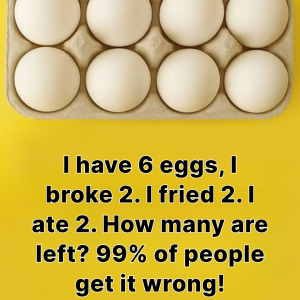
We love these little challenges that wake up your brain in just two minutes flat—and this one might really surprise you!
Picture a simple, almost childlike scene where every detail matters: a slope, a seesaw, a few rocks, and five people labeled A through E. Only one question: if E sets things in motion, who ends up in trouble first? Take a deep breath… and let’s play.
The challenge in one picture (without giving away the answer)
Here’s the scene: E is about to push a rock that can roll down a slope. At the bottom, D is stuck with only his head showing. Nearby, a seesaw plank holds another rock on one end; under the raised end, C is lying down.
Further away, B and A are watching. The trick? Ignore distracting background details and focus on the slope’s line, the balance of the plank, and how the rocks are likely to behave.

Clues to watch for: logic and everyday physics
The problem: where do you start when everything seems to happen at once?
The solution: sort the forces in order of importance.
Gravity: the rock E pushes will roll down, not sideways.
Alignment: does it pass near D or hit him directly?
The plank: if one end is weighted down, the other end drops.
The second rock: if lifted, will it roll somewhere else?
Think of it like a recipe: something pours, it presses, it tips… and the chain reaction becomes clear.
Step-by-step reasoning: who’s in danger first?
The problem: the question asks who gets hit first.
The solution: forget misleading ground details. The rock E pushes rolls straight down. D is right in its path, so he’s the first to be in trouble.
Second effect: the impact tips the plank, lowering the side above C—putting C directly at risk next.
Third step: the other end of the plank rises, freeing the second rock so it rolls away. On its path, it’s B who faces the next problem.
Conclusion: the order of bad outcomes is D, then C, then B. A stays safely out of the chain reaction.
A mental trick: think “domino effect.” The first domino is the slope, the second is the plank, and the third is the second rock.

What this game reveals about how you think
Problem: do you hesitate, change your mind, or see multiple possible outcomes?
Solution: that’s completely normal! Your brain is testing different scenarios, like a director filming several takes.
The key isn’t knowing advanced physics, but identifying the trigger (the slope), anticipating the plank’s reaction, and then following the logic to the end.
A quick tip: cover up “extra” details in the drawing with your hand (or a sticky note) and reveal them step by step, as if you were investigating a case.
Finally, compare your reasoning with the solution: if you came up with D > C > B, congratulations! If not, replay the sequence in slow motion. Just like whipping egg whites into stiff peaks—it takes patience and consistency, but the “aha!” moment will come.




